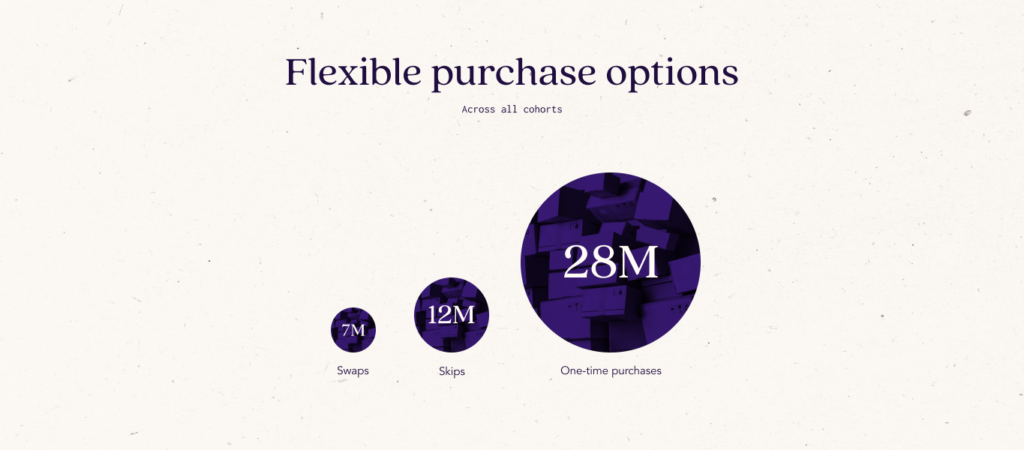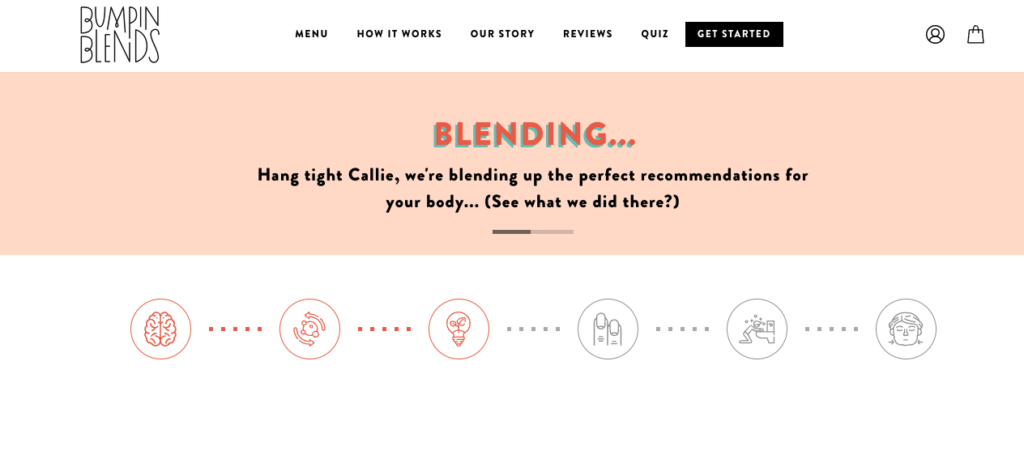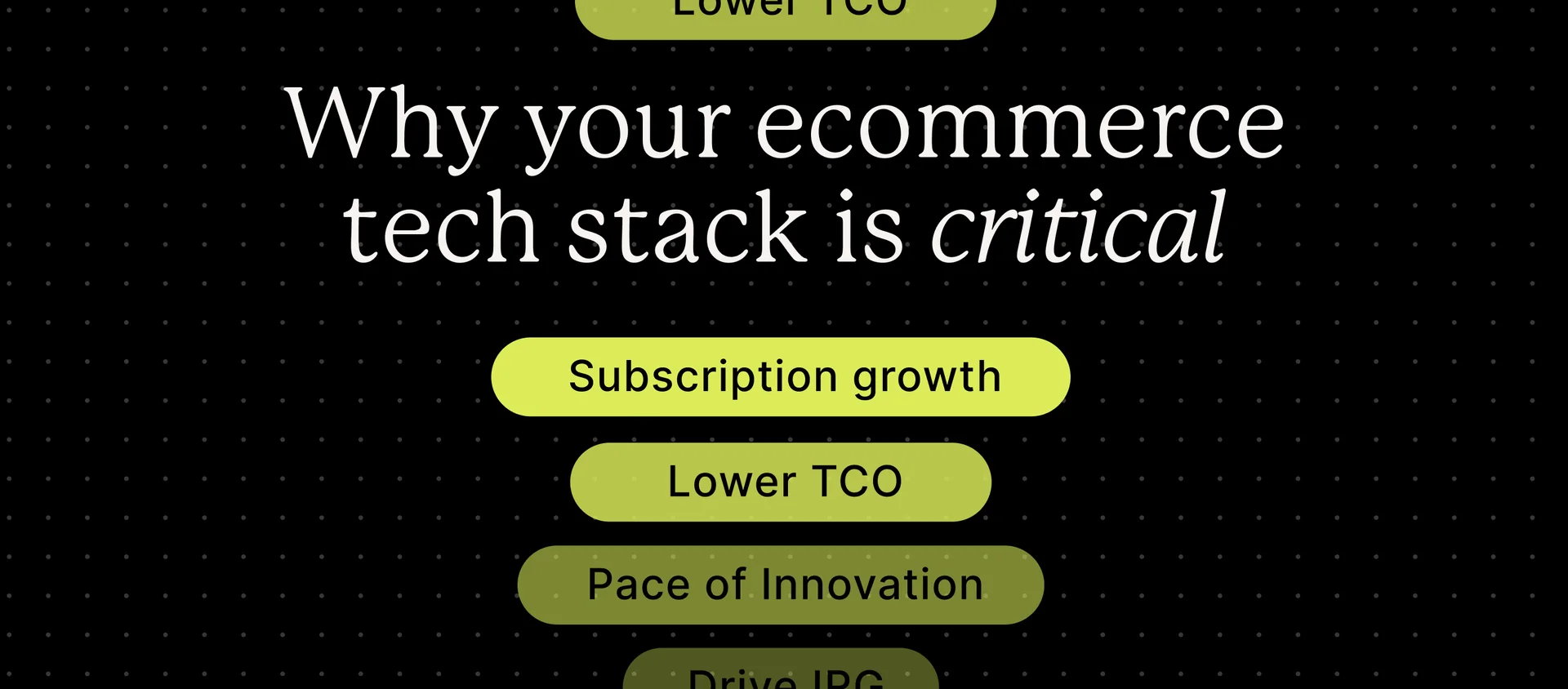As more merchants enter the subscription market at record rates, customers are presented with a wide variety of opportunities to purchase from brands within the same vertical. While it may seem like the best way to capture their interests is to provide every option under the sun, you actually run the risk of inducing analysis paralysis.
So what can you do to create a world in which your customers feel like you truly “get them” without overwhelming them with too many options?
Customization is key to personalized experiences
There are many ways to customize your ecommerce website for a unique customer experience. Additionally, enabling personalization features can provide you with valuable zero-party data collection (or customer-sourced information) to further empower your intelligence around your target market and what they’re drawn to.
Here are our 5 top tips for ecommerce customization that can generate customer loyalty and overall long-term retention.
1. Offer customers flexible options
Your strategies to reduce churn and increase customer retention are often met with the difficult task of keeping customers excited and engaged. Perhaps they’ve accumulated too much of your product due to underuse. Or maybe they have decided that they’ve had their fill of a certain type of product or flavor.
Without options to customize their own customer experience, you run the risk of them churning. Providing flexible options for them to skip a shipment, swap out a product, or add on a product to their regular order puts your subscribers in the driver’s seat.
And we know these subscribers are craving a personalized experience like this. In the 2022 State of Subscription Commerce report, there were 12 million shipments skipped, 7 million products swapped, and a whopping 28 million products added on.

2. Utilize zero-party data
Before diving into zero-party data and its incredible opportunities for ecommerce businesses, let’s quickly differentiate between other sources of data you are likely already collecting.
- Third-party data is the most removed, yet can provide snapshots of market trends and industry insights. Though helpful in understanding broader inferences about the market, third-party data is the least reliable.
- Second-party data is often collected from a trusted partner or through data marketplaces. The only real difference between second-party and first-party data is who it’s collected by.
- First-party data is your traditional form-fill information provided directly from your customers. This can include not only their email address, phone numbers, and address, but can also capture demographic information, web activity, and interactions with internal teams.
Zero-party data is unique in that it is offered up directly by your customers but in a much more preferential way. You may get this information from things like product quizzes or questionnaires, where you’re learning their very specific preferences. The real difference between first-party and zero-party data is that zero-party data is often offered up proactively by the customer, rather than reactively.
Using this customer data collected, you can create a personalization strategy that can help not only with product customization but also with a stellar customer experience.
Bumpin Blends, a smoothie-cube brand, collects relevant information in the form of a quiz to create personalized recommendations for their customers. After providing zero-party data like your name and email, you select the areas you’d like support in—such as sleep, stress, anxiety, etc. Bumpin Blends then calculates those selections to provide you with a list of their products tailored to the needs you selected.

3. Provide offerings at multiple stages of the customer journey
The buyer’s journey can sometimes be as straightforward as, “I heard about this product, and I would like to purchase it.” But more often than not, it’s more of a spaghetti model of multi-directional decisions your customers are making.
There are many circumstances in which a customer has made their decision to purchase a product from you, but then does the research both on your ecommerce site and outside of it to unsell themselves from your product.
So how do you meet them where they are at every stage of the web of the customer journey? The key here is to provide them with content and information from start to finish, but not to present it in an entirely linear fashion.
Having content on your website that speaks to your customer base and educates them beyond your product is a great way to capture those at every stage of their journey. Whether they are totally unaware or have heard of your offerings before, you want to show up in their browsing history as a trusted source of information.
4. Create personalized retargeting campaigns
Web personalization for your own site is extremely important. But have you decided how you want to deliver personalized experiences in your retargeting campaigns?
For example, if a customer comes to your online store and browses a very specific set of products, do you have mechanisms in place to target them once they move off of your site to further engage them?
Creating personalized marketing campaigns is a tricky balance between being overly creepy and perfectly on the mark. Giving customers an offer that is directly tied to the options they were looking for is a great way to re-engage them and bring them back to your site.
5. Communicate with customers where they are
Whether you’re sending emails through your marketing automation tool, or delivering messages via SMS, it’s imperative to create personalized content for your readers.
While email communication has been the tried and true method of communication for online retailers, they unfortunately get lost in the shuffle due to the sheer inundation the average consumer receives on a daily basis.
Providing various options for customers to receive communications from you is not only a great way to increase sales, but also to cultivate loyal customers through engagement with your brand.
Additionally, once your customers have dictated which way they prefer to communicate with you, you’ll want to make sure you’re delivering customized content where their purchasing behavior is utilized to feel unique.
Many brands are using SMS functionality to help increase engagement with their subscribers, and in doing so, are seeing up to 30% higher lifetime value. Personalization through communication reaches your target audience in ways that continue to encourage loyalty and retention.
Ecommerce personalization increases retention
The ecommerce market will continue to grow, and as a result, brands will have to create creative and unique experiences to retain their customers.
Product personalization can only take you so far. Where the real difference comes is in creating a personalized shopping experience at every turn—your content, your utilization of data, and your engagement opportunities will further drive loyalty and retention among your subscribers.



